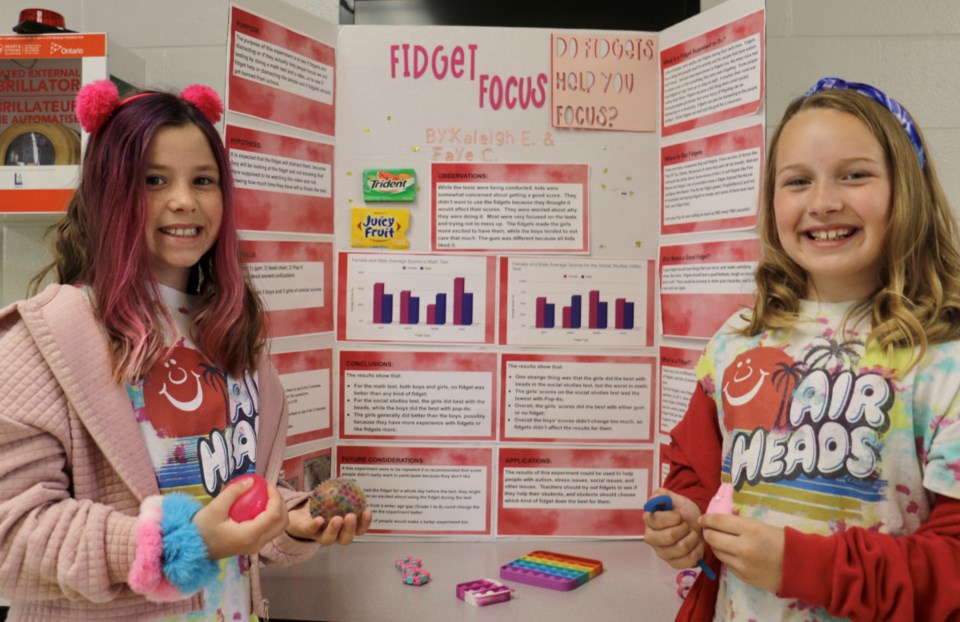Tara Jeffrey
When it came time to choose a science fair project, Errol Village students Faye Colborne and Kaleigh Edmunds decided to put their fidgets to the test.
“We wanted to find out if they actually help or if they’re just a distraction,” Edmunds said of the popular handheld toys, which some tout as tools to help relieve stress and stay focused.
What started out as the ‘fidget spinner’ craze in 2017 has grown to include pop-it push-bubble toys, puzzle cubes, stretchy string, and the girls’ personal favourites — the Mochi squishy and stress ball.
Fidgets are a hot topic in classrooms, and some teachers have deemed them such a distraction they’ve banned them altogether, the girls note.
“Fidgets became a big thing when COVID started because people got bored,” Colborne said.
“But some forms of fidgeting can be distracting in a classroom. They’ve also been proven to help people with anxiety, stress and even autism."
So the pair took advantage of their school science fair to set out and resolve the question: Do fidgets really help students focus in the classroom?
The two-month experiment involved controlled focus groups of girls and boys, each given various types of fidgets — pop-it toys, homemade bead chains, and gum. Participants were asked to complete two different tests, a math quiz, and social studies Q&A. Others were given the tests without a fidget.
“It worked… and it didn’t work,” Colborne said of the results, which showed that most students without a fidget performed better on the math quiz.
For the social studies test, however, girls did best with bead chains while boys did better with pop-its.
“The girls generally did better than the boys, possibly because they have more experience with fidgets, or like them more,” Colborne said. “The boys’ scores didn’t change too much, so fidgets didn’t affect the results for them.”
The project earned the pair gold at their school’s science fair, and a ticket to the Lambton County Science Fair last month where they earned the Ineos Styrolution Exhibition Gold award.
Their conclusion: It’s all about balance and some mutual understanding between teachers and students.
“Like, if you have a loud fidget out on your desk, it’s going to distract others,” said Edmunds. “But if you’re quietly squeezing a stress ball under your desk, I think that’s OK.”
The girls, both 9, say they’ve caught the science fair bug and are already planning their next experiment: The five-second rule — is there any truth to it?
